Augmented Reading
This is a guide about creating an interactive, augmented reading experience.
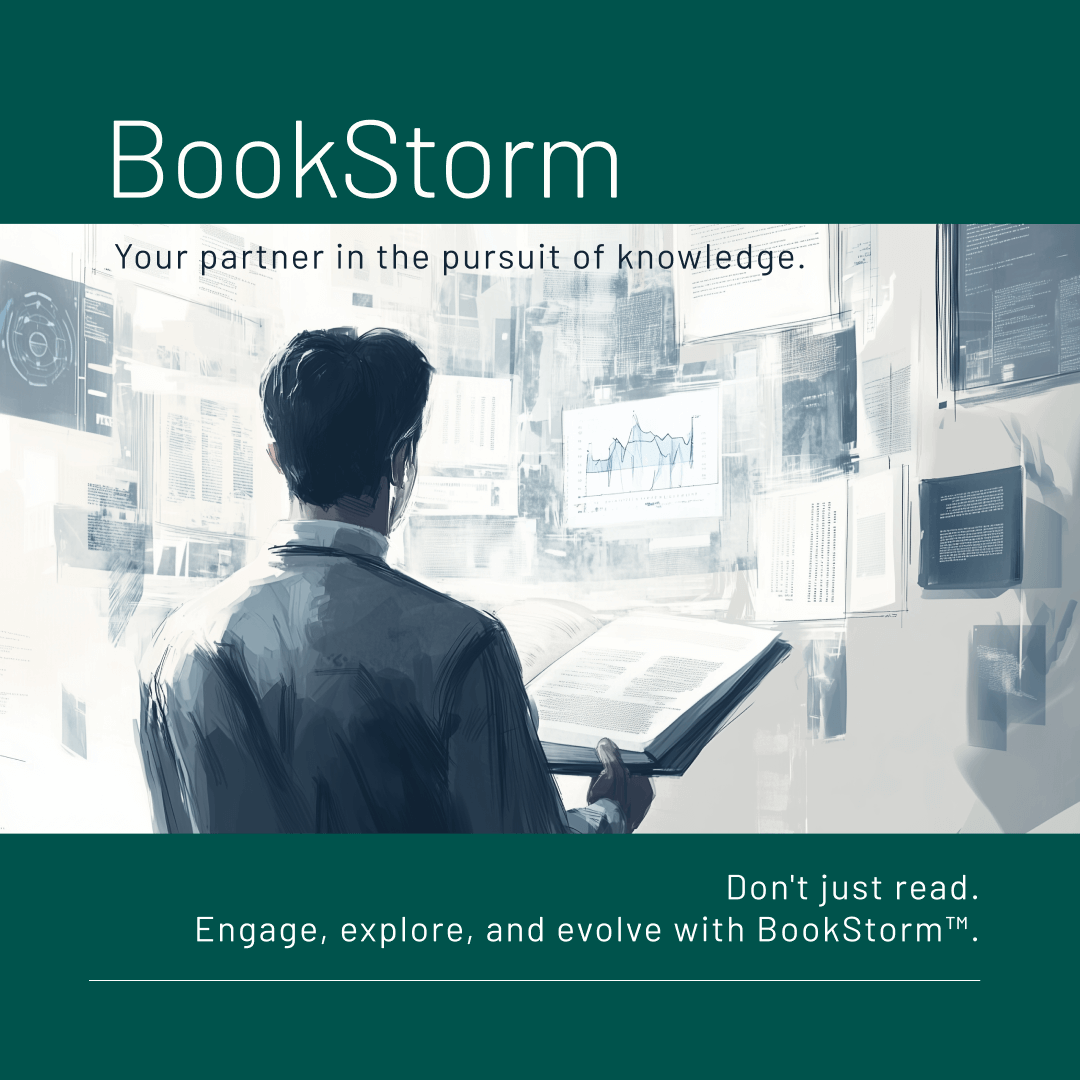
The TL;DR is:
- get a book / paper / article / text
- read and/or listen to the material
- review and discuss the book with AI
Let’s start things off with an example response for one chapter of Alchemy by Rory Sutherland.
Per chapter, I am getting and reviewing a brief summary, the key ideas, anecdotes and examples, and a few quotes to re-connect with the flavor and style of the author’s writing.
Bote that I have already read or listened to the respective chapter when I do this kind of review.
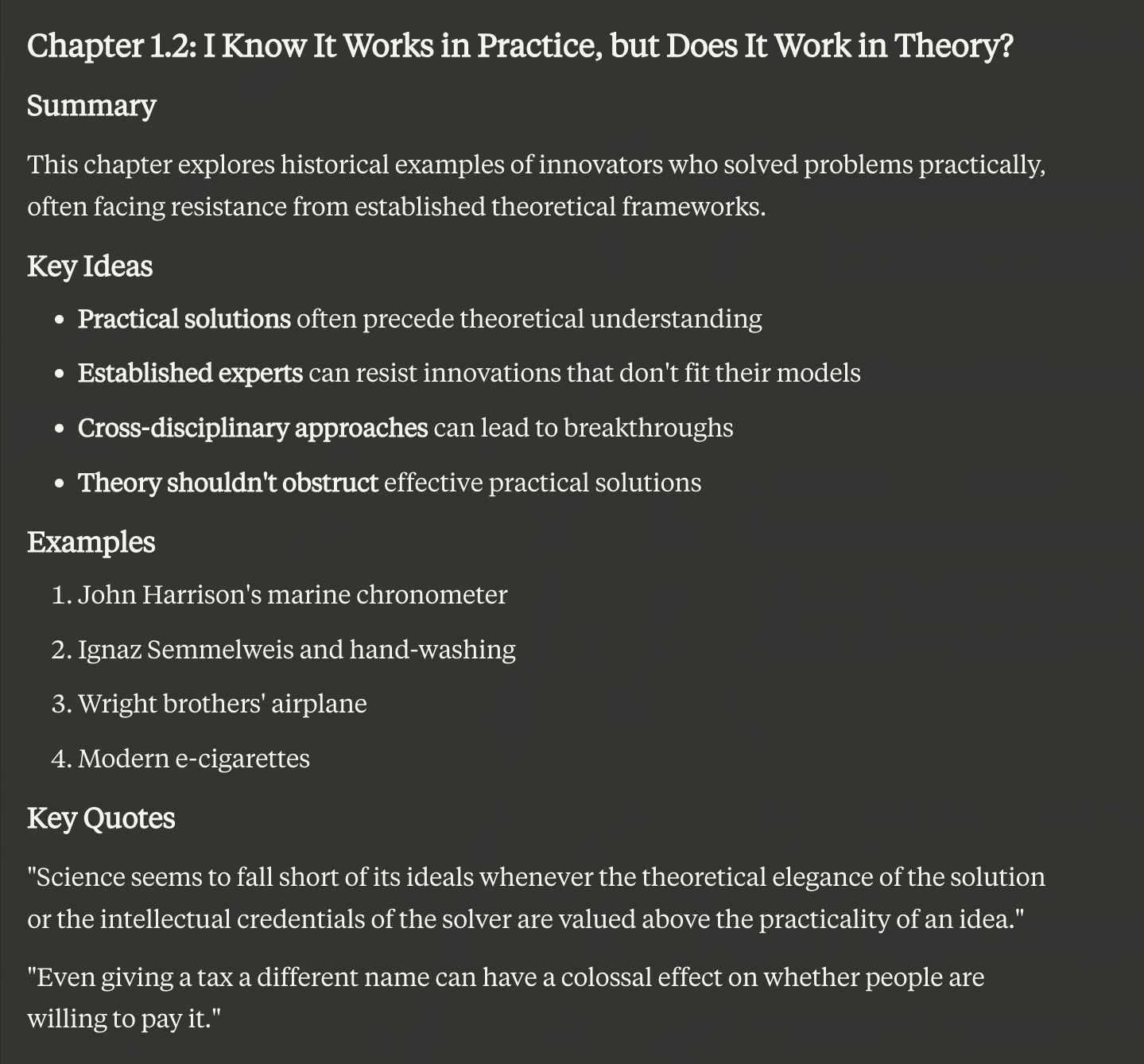
Now let’s see how you get set up and rolling to get the exact augemented reading experience that you are looking for.
Here are step-by-step instructions.
Prepare Your Content
Plain text is ideal for AI processing (that is *.txt files) .
Machines don’t care much about formatting. In fact, more can go wrong with fancy formatting. So text is all you need. It is easily and reliably readable.
I know, there are many PDFs floating around the internet and in your company’s file storage. But PDF files can be a challeng to read for machines, due to complex structures (tables, etc.) and formatting issues. You may have experienced such issues already ('There was an error parsing the PDF file.').
You can try and add PDFs to your AI tool of choice directly. My current recommendation is to convert the files before you do. Then check that you have no weird errors or artifacst. It only takes a minute to do so.
Convert Files to Text for Best Results
Conversion is a matter of seconds with free services like cloudconvert.com to convert other formats into txt.
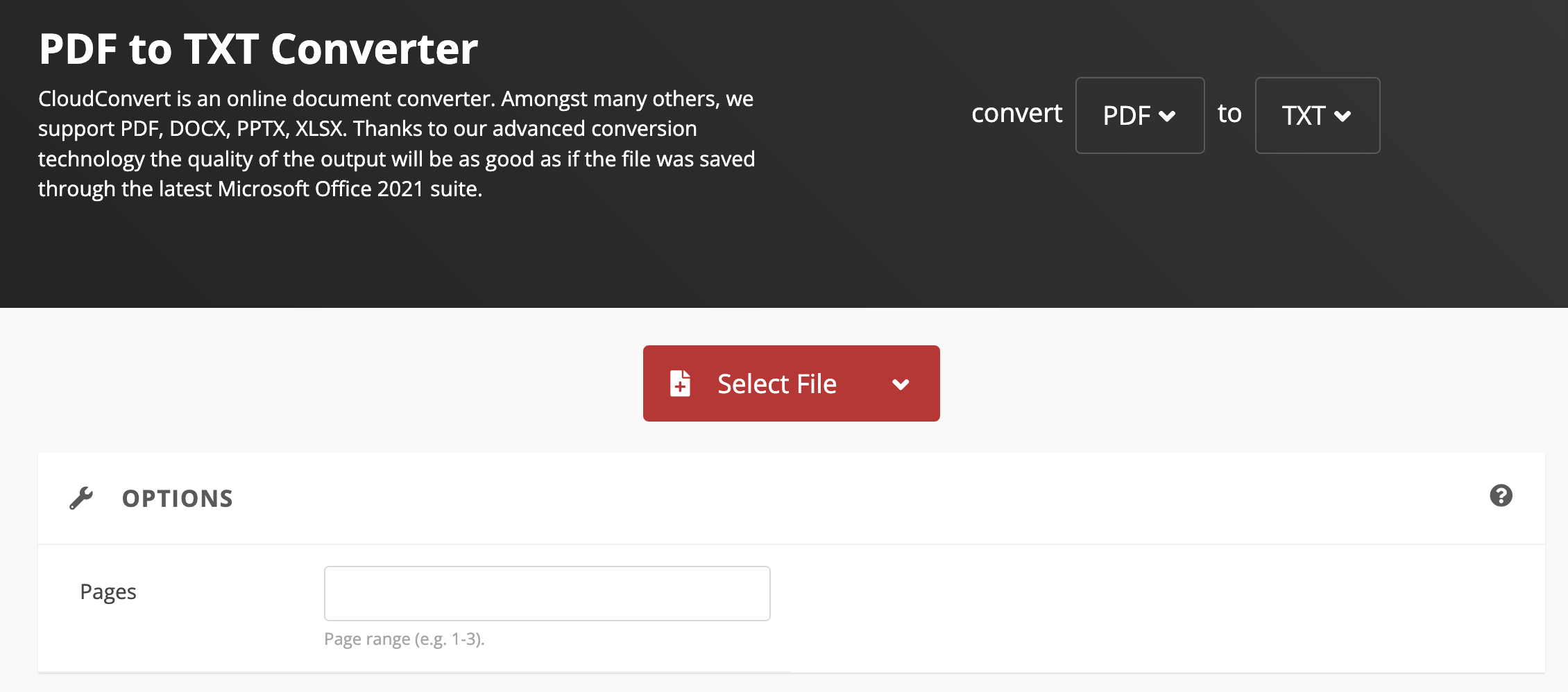
Get Organized
Most of the examples I have here are how I am working with Claude.ai and its projects feature. This is merely a personal preference. You can do more or less the same with ChatGPT or Google’s Gemini models.
If you are using Claude,
- create a project
- Upload the book in full, or split into manageable chunks (e.g., 10 chapters each)
- Use consistent naming conventions for easy reference.
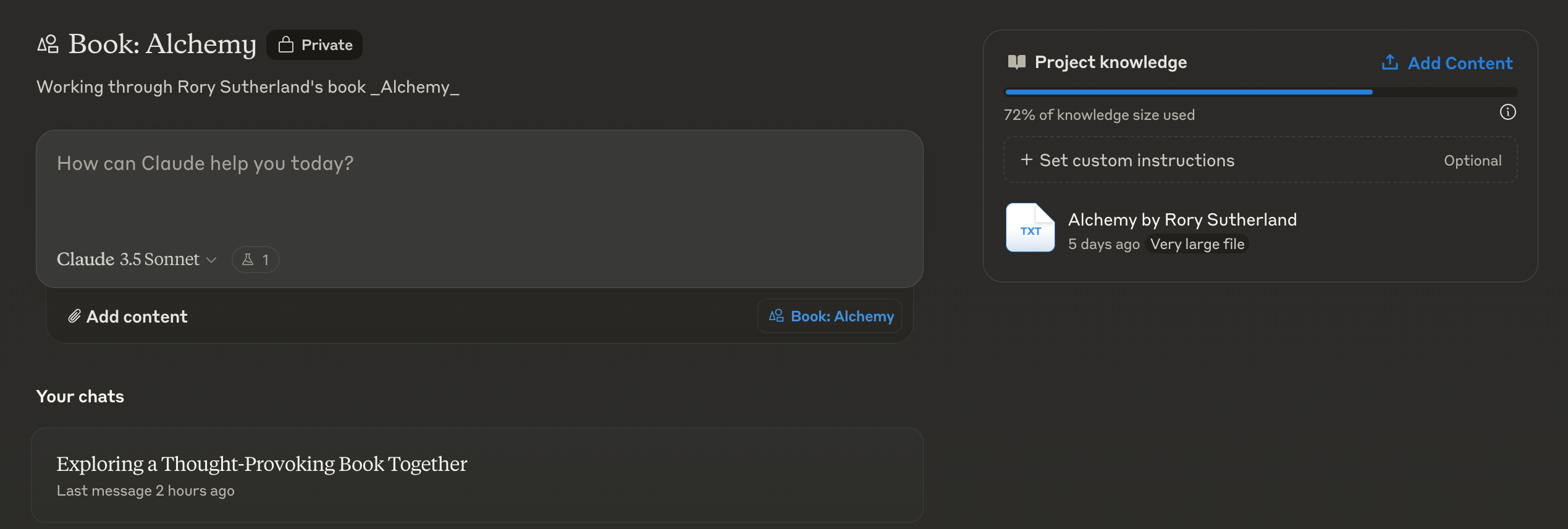
NotebookLM
Google has a free, very well received and under-marketed tool called NoteobookLM. It just got an interesting experimental feature which allows you to generate a podcast-like 'deep-dive' conversation between a female and a male host, based on your uploaded material, here called sources.
You can also chat with the tool about the material, or use some of the presets there.
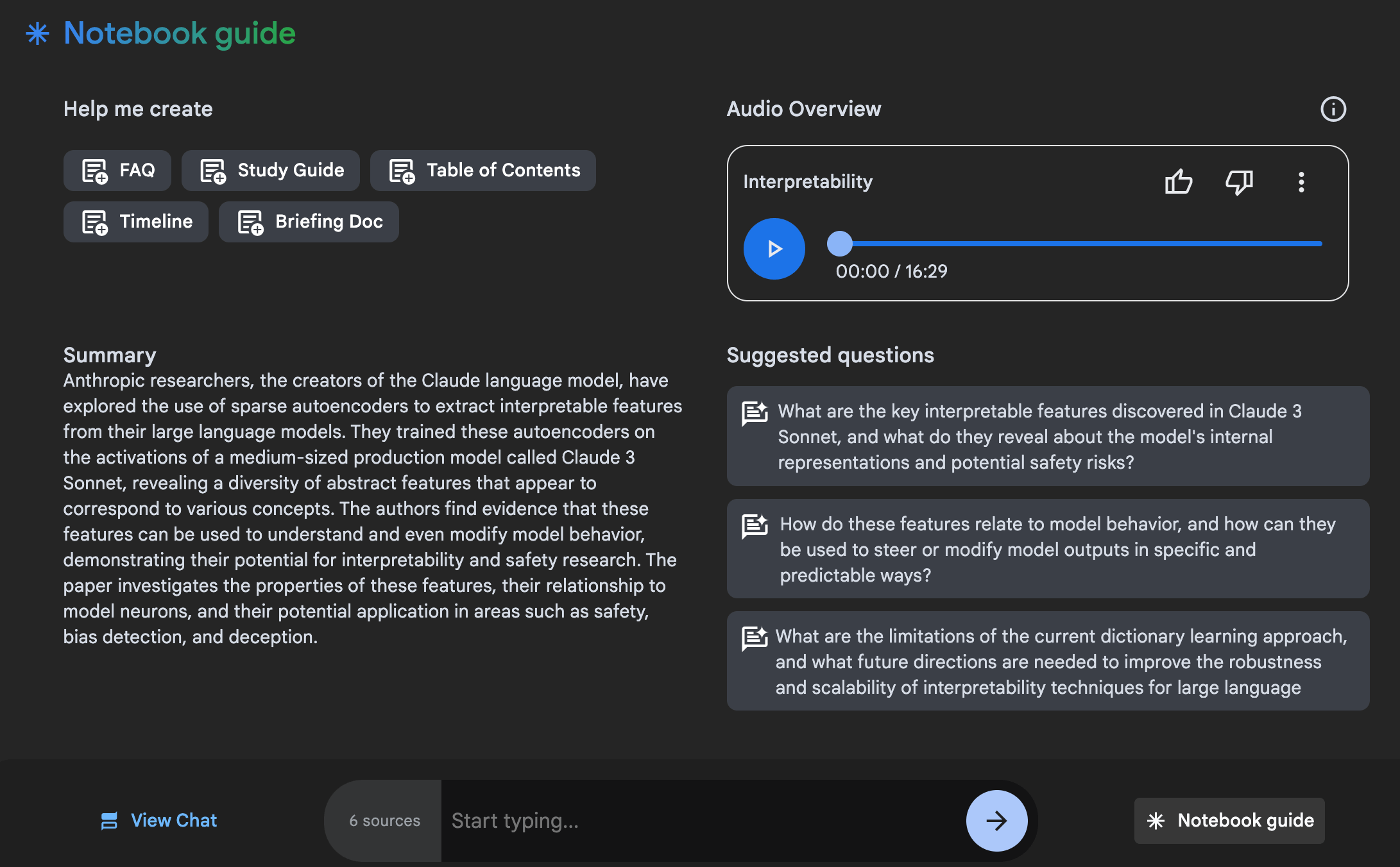
So here’s what I got out of NotebookLM on Interpretability. All rights reserved, or whatever.
AI-Assisted Reading Techniques
Chapter-by-Chapter Review
- Read or listen to a chapter, or some appropriate chunk of the book.
- Engage with the AI using the core prompt structure below.
Combining Formats
You can read the paper book, ebook, or listen to the audiobook. Any combination that fits your preferences is good.
Effective Prompts (Examples)
Basic Prompt
This is my basic prompt.
💬 For each chapter, please provide:
- A concise summary of the chapter's content.
- The main concepts or arguments presented in the chapter.
- Any significant anecdotes or examples used to illustrate the ideas.
- The potential implications or consequences of the ideas presented.
- 2-5 key quotes that best encapsulate the information in this chapter.
- A list of notable mentions (people, books, studies, artwork, etc.) referenced in the chapter.
Please structure your response with clear headings for each of these elements, use lists where appropriate, and bold key words or phrases for emphasis. Format the output to be easily readable and scannable.
Try it. Evaluate the responses. Modify to your meet your preferences, your use case, and the book’s unique character.
For books building concepts progressively:
“How do the ideas in this chapter build upon or relate to concepts from previous chapters?”
For books with practical applications:
“What are some real-world applications or examples of the concepts discussed in this chapter?”
Make It Personal
Consider providing an additional file that explains
- why you are reading this book,
- what you are trying to learn, or
- what intention you have.
Ask the AI to connect each chapter’s content with that, you can also trigger this when and if it is appropriate, or keep it until you reach the end of the book.
Optional Prompt Add-Ons and Experiments
- Author’s voice: “Please use the author's tone, style, and voice for your output.”
- Critical analysis: “What are potential criticisms or limitations of the arguments presented in this chapter?”
- Personal reflection: You can include to be prompted by the AI to give a personal reflection on what you are taking away, what you found most impressive, or most remarkable.
- Interdisciplinary connections. Example: “How did the invention of X technology affect the educational institutions?”
- Historical context: “Place the ideas from this chapter in their historical or cultural context.” If you are reading older books, you can ask the AI to point out which ideas and concepts have since been replaced or updated by newer insights.
- Visualization: “Create a visualization of [idea/concept/principle].”
- Future implications: “How might the ideas in this chapter influence future developments in this field?”
- Comparative analysis: “How do the author's views compare to other prominent thinkers in this area?”
Remember to adjust your prompts based on the specific book you're reading. Some books may require more focus on conceptual development, while others might benefit from exploring practical applications or historical contexts. Others might call for creating a set of nicely designed inspirational quotes.
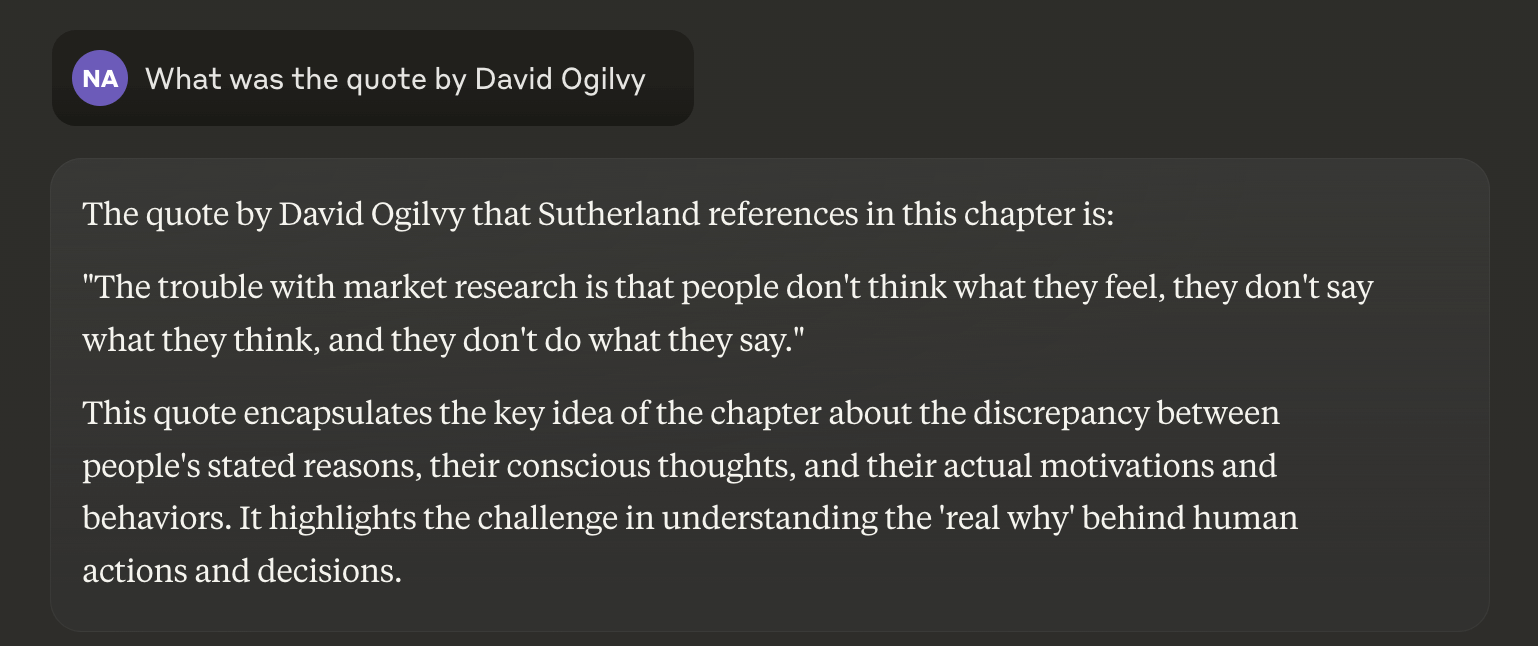
(I would then optionally follow up by telling the AI to rewrite the chapter summary and include this quote.)
Advanced Techniques and Considerations
Multimodal Learning
Integrate various forms of media to enhance your understanding:
- Combine AI-assisted reading with audiobooks, video lectures, or podcasts
- Use AI to summarize or compare information across different media formats
- Example prompt: "Compare the key points from Chapter 3 of the book with the main ideas presented in the related podcast episode I listened to."
Customization for Different Genres
We are focusing on non-fiction reading here. Popular science, business, or self-help books. For other genres, here are some suggestions:
- Fiction. Focus prompts on character analysis, plot development, and themes
- Technical manuals. Break down complex procedures into step-by-step explanations
- Philosophical texts. Emphasize conceptual analysis and historical context
Handling Complex or Technical Content
- Familiarize yourself with the field’s general concepts before diving into specific technical material
- Use AI to break down complex ideas into simpler terms
- Ensure you understand each section before moving on to the next
- Example prompt: “Explain the concept of [technical term] in simple language and provide an everyday analogy to illustrate it.”
Comparative Reading
AI excels at comparing and contrasting multiple works:
- Use AI to identify similar or differing concepts across multiple books
- Explore how ideas have developed over time in a particular field
- Example prompt: "Compare the approaches to [concept] in Book A and Book B. How have the perspectives on this topic evolved between these publications?"
Addressing Language Barriers
- Use AI to assist with reading books in non-native languages
- Ask for clarification on idioms or culturally specific references
- Example prompt: “Explain the meaning and cultural context of [phrase] used in Chapter 5.”
Long-Term Knowledge Management
Transfer processed summaries and insights into your preferred note-taking app (e.g., Notion, Obsidian)
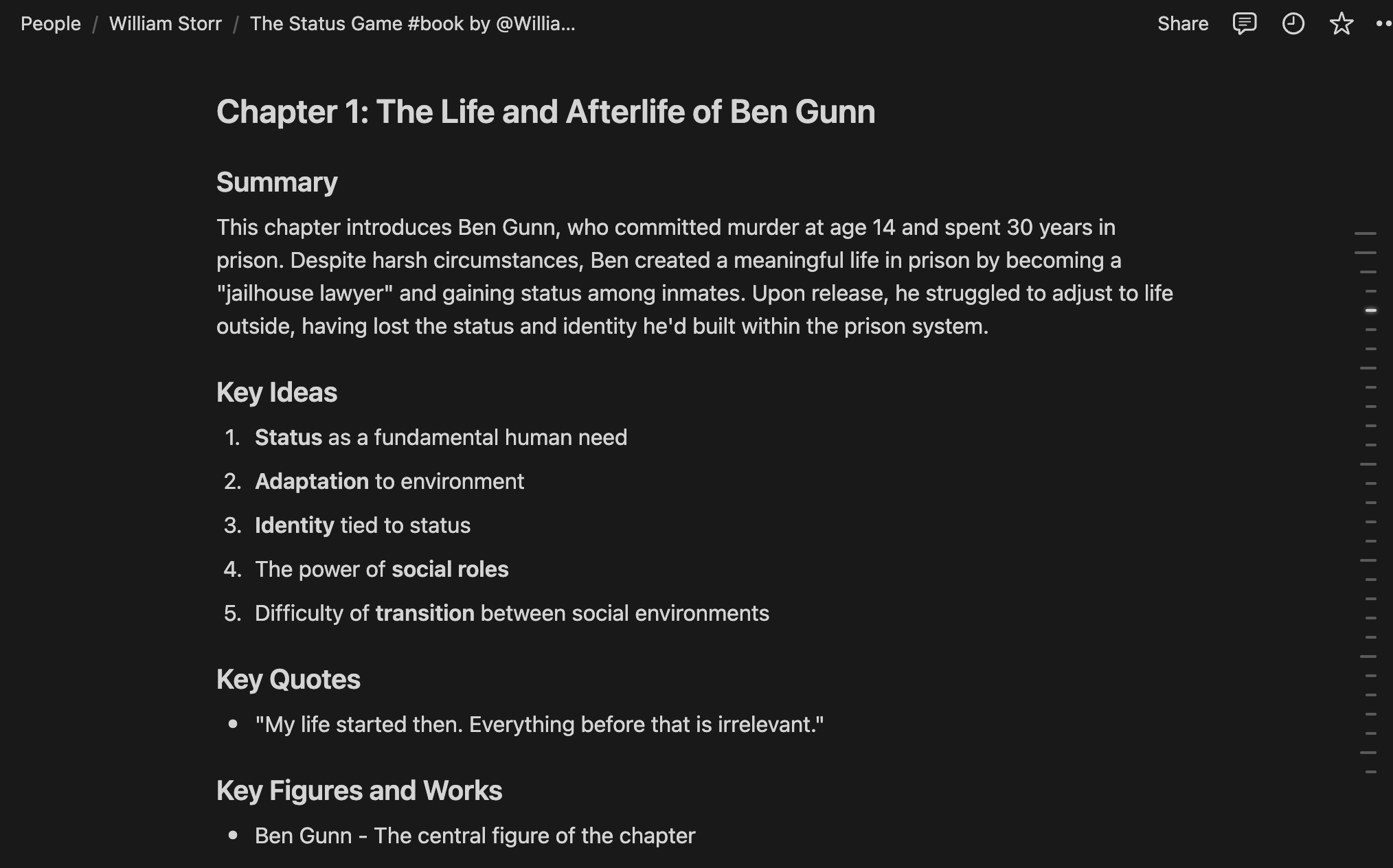
- Use AI to help organize and tag your notes for easy retrieval
- Regularly review and synthesize information across different books and topics
💡 If your goal is learn, study and acquire knowledge, you might want to consider using spaced repetition, in combination with an app like Anki.
In that case, you can have the AI assist you with creating flashcards.
Topics Over Books
- Work with a stack of books, see here.
- Focus on a set of books or materials pertinent to current problem situation or project.
Bonus: AI-Assisted Book Discovery
After finishing a book you enjoyed, ask AI these questions to discover more great reads:
- The Netflix question: "Which other books might I enjoy based on this one?"
- Deeper dive: "What books would allow me to explore this topic further or in more depth?"
- Different perspectives: "What other books cover the same topic from different angles?"
- Author's catalog: "What else has this author written that I might enjoy?"
- Author's influences: "What books influenced this author? Who are their favorite authors?" (Consider using search tools or Perplexity for author interviews or articles)
Final Tips and Considerations
- Be flexible with your prompting. Adjust based on the book’s content and your learning goals.
- Use AI as a tool to enhance your reading, not replace it. Engage critically with the AI's responses.
- Combine AI-assisted reading with traditional note-taking and reflection for a well-rounded approach. Remember that you can also take photos (or scan) your handwritten notes and add them into the mix.
- Experiment with different prompting styles to find what works best for you and each specific book.
Want More?
To get actionable tips, workflows and solutions, straight from the lab, simply enter your email below.
Disclaimer
This guide is not meant to be comprehensive or work for all kinds of source material. It is designed to get you started and be only as prescriptive as necessary to put you on your own journey. Consider this a lab where we are experimenting.